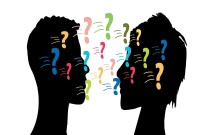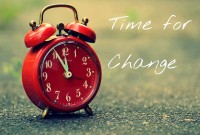- Home
- Business Processes
- Industry Knowledge
- Aerospace Industry
- Automotive Industry
- Banking Domain
- BFSI Industry
- Consumer/ FMCG Industry
- Chemicals Industry
- Engineering & Construction
- Energy Industry
- Education Domain
- Finance Domain
- Hospitality Domain
- Healthcare Industry
- Insurance Domain
- Retail Industry
- Travel and Tourism Domain
- Telecom Industry
- Leadership Skills
- eLearning
- Home
- Leadership
- Leadership Styles
- Symbolic Interaction and Social Change
Symbolic Interaction and Social Change
George Herbert Mead, an American philosopher, affiliated with the University of Chicago founded the theory of symbolic interactionism. A major aspect of this is that people interact by symbols both verbal and non-verbal signals and every interaction makes a contribution to the mental make-up of the mind thus every interaction with someone, changes you and you go away a different person signifying that humans and change go together.
George Henry Mead, of Chicago University, lectured much and wrote very little. His ideas were so powerful that his students felt the need to take detailed notes and produced his material so that we, after his death, can reflect upon it. He gave rise to a sociological and psychological theory, academically known as 'symbolic interactionism'. Symbolic interactionism also referred to as the Chicago sociological tradition.
Dynamic Human Experience
According to Mead, the mind is not just reducible to the neurophysiology of the organic individual but is emergent in "the dynamic, ongoing social process that constitutes human experience. In every waking moment, we humans are taking new impressions of the world around us and rearranging the old impressions in the light of the new. Mead states that "the self is a social process," meaning that there are series of actions that go on in the mind to help formulate one's complete self, and hence there is no such thing as stability. Several significant schools of philosophic thought have stressed this.
The Constant Change Process
We are all the time taking into our minds new impressions through the senses. We see things, we hear things, we touch things, we taste things, and beyond that, we have feelings about the messages our five senses bring to us.
These impressions make us sad, happy, impatient, excited, worried, angry, uplifted, determined, uncertain, jealous, envious; they make us love, hate, sympathize, empathize, co-operate, oppose, fight; and these emotions, being stirred, provide us with energy and impel us to action. All these impressions and the emotions they stir are recorded in our memories.
All these related emotions are written down in our human audio-video brain machines and this data keeps on evolving all the time. As more ingredients come into the mind, so the earlier ones seem just a little different- they are expanded and perceived in a new light. Human memory is also selective and the entire recordings that we have done over time do not make its presence felt consciously all the time. Most of it is buried in the depths of the unconscious and sometimes get triggered by new events. We have an exciting picture of the human mind as a flow of impressions, and emotions, and ideas that connect them. The thinking we do about impressions is part of the change process.
Human Life as Interaction
As we are constantly developing new connections hence we are constantly changing them as well. Hence change is the microsecond by microsecond essence of living. It is important to understand that this way, change actually fits with the very structure of our minds and of our thinking. Hence the principles of change management discussed in this section and the need for a change mindset should not be difficult to absorb.
A major aspect of it is that people interact by symbols - words and non-verbal signals in particular. Every interaction makes a contribution to the mental make-up of the mind. When you have had an interaction with someone, you go away with a different person. You have each added something to the other.
Mead made a distinction between the 'I' and the 'Me'. The 'Me' is the accumulated understanding of "the generalized other" i.e. how one thinks one's group perceives oneself etc. The 'I' is the individual's impulses. The 'I' is self as a subject; the 'Me' is self as an object. Mead described each individual as having of being a central 'I' around which a whole lot of 'me s'-- less stable and derived from the interactions with others were revolving. The 'I' then constantly reacted to all these constantly changing 'me s' and absorbed them into itself.
Take the example of the social act of economic exchange. In any exchange, both buyer and seller must take each other's perspectives towards the object being exchanged. The seller must recognize the value for the buyer, while the buyer must recognize the desirability of money for the seller. People who have influenced us have changed us. Once you have read this article, as a result of this interaction, are will be a slightly different person from the one you were a few moments ago.
So being human and change go together and this should make the quest of this unit easier.
A Positive Approach to Change
The task of the business or any commercial enterprise is to make better things, using less of the effort and resources. Management is designed to maintain the highest rate of change that the organization and the people within it can stand. Yet even when we acknowledge all this, we are prone to resist change. We fear it; we avoid it and we sign for the status quo.
These perceptions of what is to be human can help us to take a positive approach to change and make it work to our advantage and to that of our enterprise. You are only really alive when you are changing. Change is the essence of personal growth, it is the basis of relationships with other people, and without it, there is no learning and no progress.
Related Links
You May Also Like
-
Team Development by Building Trust
As your team begins to work together, you need to establish a way each team member can exchange ideas and build mutual trust. Successful groups are built on trust and collaboration. A free exchange of ideas, in an open environment, will allow your team to get to know each other and enable you to check on how they work together. Learn some tips to help build team trust and establish personal bonds.
-
Change is a complex phenomenon. There are different types of changes that are going on around us. Listed in this article are twelve areas in which change arises and bring some classification to it. However one may classify the change, the various heading is always interrelated. The change could be triggered by market changes, technological changes, or organizational changes.
-
Four main areas in an organization that need special focus when we discuss the change in an organizational setup are organizational structure, technology, work environment, and the people. Some people call it a process, system, and people. Change in an organization includes adapting to change, controlling change, and effecting change.
-
Listening is the foundation for good communication. It is also the hardest skill to master. Do you listen to confirm what you already know, or do you listen to explore and learn new things? How can we create receptive communication as a listener? The real art of listening involves awareness and sensitivity to the feelings of the speaker because it is at the feeling level that genuine connection, relationship, and healing occurs.
-
At times like this, more than ever, it is essential that the organizations appreciate the human resource management skills required to successfully handle the transformation of industry and create an innovation culture. Read more to understand, how as a manager you can help in cultivating a culture of continuous innovation and adaptation to change.
-
Symbolic Interaction and Social Change
George Herbert Mead, an American philosopher, affiliated with the University of Chicago founded the theory of symbolic interactionism. A major aspect of this is that people interact by symbols both verbal and non-verbal signals and every interaction makes a contribution to the mental make-up of the mind thus every interaction with someone, changes you and you go away a different person signifying that humans and change go together.
-
Charles Darwin had once commented that “It is not the strongest or the most intelligent who will survive but those who can best manage change.” Agility means the capability of rapidly and efficiently adapting to changes and recently, agility has been applied in the context of software development, agile enterprise, and agile leadership. Agile leaders play an important, even essential, role in scaling agility in an organization. Understand how being an agile leader helps in effectively catalyzing organizational change.
-
At different points in your professional career, it is helpful to identify your core values. Values are the qualities considered to be the most important guiding principles that determine the priorities in your life and greatly influence your career choices. Your career brings happiness when it is in agreement with the beliefs you have about what is important and meaningful to you. Awareness of your values will help you develop a clearer sense of what's most important to you in life.
-
David Kolb produced this popular model for learning in 1984. The model suggests four stages of learning which most learners go through in order to learn effectively. Leaming is itself a process of change. Something is added to our perception and prepared us for the next impression, which will change our understanding yet more, however minutely. The Kolb contribution is a significant one because it practically equates change and learning.
-
Storming Stage of Team Development
Storming is the second stage of team development and this stage is characterized by a bid for power and inter-personal conflicts. Learn the key factors that occur in the storming stage and the strategies that a team leader can adopt to pass this stage of high winds
Explore Our Free Training Articles or
Sign Up to Start With Our eLearning Courses

About Us
Learning
© 2023 TechnoFunc, All Rights Reserved










